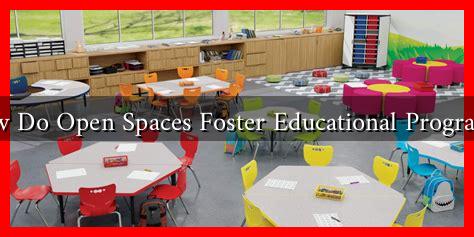-
Table of Contents
- How Do Open Spaces Foster Educational Programs?
- The Importance of Open Spaces in Education
- Case Studies: Successful Educational Programs in Open Spaces
- 1. The Edible Schoolyard Project
- 2. The High Line in New York City
- 3. The Green School in Bali
- Statistics Supporting the Benefits of Open Spaces
- Challenges and Considerations
- Conclusion
How Do Open Spaces Foster Educational Programs?
Open spaces, such as parks, gardens, and community areas, play a crucial role in enhancing educational programs. These environments provide unique opportunities for experiential learning, social interaction, and community engagement. This article explores how open spaces contribute to educational initiatives, supported by examples, case studies, and relevant statistics.
The Importance of Open Spaces in Education
Open spaces serve as dynamic learning environments that extend beyond traditional classroom settings. They offer a variety of benefits that can significantly enhance educational programs:
- Experiential Learning: Open spaces allow students to engage in hands-on learning experiences, which can lead to deeper understanding and retention of knowledge.
- Social Interaction: These areas promote collaboration and communication among students, fostering teamwork and social skills.
- Connection to Nature: Exposure to natural environments has been shown to improve mental health and cognitive function, making learning more effective.
- Community Engagement: Open spaces often serve as venues for community events, allowing students to connect with local culture and history.
Case Studies: Successful Educational Programs in Open Spaces
Several educational programs around the world have successfully integrated open spaces into their curricula. Here are a few notable examples:
1. The Edible Schoolyard Project
Founded by chef Alice Waters in Berkeley, California, the Edible Schoolyard Project transforms schoolyards into organic gardens. This initiative teaches students about sustainable agriculture, nutrition, and environmental stewardship. Research shows that students involved in gardening programs have improved academic performance and increased interest in healthy eating.
2. The High Line in New York City
The High Line, a repurposed elevated railway turned public park, serves as an educational platform for local schools. The park offers guided tours and educational programs focused on ecology, urban design, and art. According to a study by the NYC Department of Parks and Recreation, 85% of students reported increased interest in environmental issues after participating in High Line programs.
3. The Green School in Bali
The Green School in Bali, Indonesia, is an innovative educational institution that emphasizes sustainability and environmental awareness. The school’s curriculum is heavily based on outdoor learning, with classes held in natural settings. This approach has resulted in high student engagement and a strong sense of community among students and parents.
Statistics Supporting the Benefits of Open Spaces
Research supports the positive impact of open spaces on educational outcomes. Here are some compelling statistics:
- A study published in the Journal of Environmental Psychology found that students who learn in outdoor settings score 27% higher on standardized tests compared to those in traditional classrooms.
- According to the American Journal of Public Health, children who spend time in green spaces exhibit lower levels of stress and anxiety, leading to improved focus and academic performance.
- The National Recreation and Park Association (NRPA) reports that 70% of parents believe that outdoor learning experiences are essential for their children’s education.
Challenges and Considerations
While open spaces offer numerous benefits, there are challenges to consider when integrating them into educational programs:
- Accessibility: Not all communities have equal access to open spaces, which can create disparities in educational opportunities.
- Safety Concerns: Ensuring the safety of students in open environments is crucial, requiring proper planning and supervision.
- Curriculum Integration: Educators must find effective ways to incorporate outdoor learning into existing curricula, which can be challenging.
Conclusion
Open spaces are invaluable assets that can significantly enhance educational programs. By providing opportunities for experiential learning, social interaction, and community engagement, these environments foster a holistic approach to education. Successful case studies and supporting statistics highlight the positive impact of open spaces on student outcomes. However, it is essential to address challenges such as accessibility and safety to maximize the benefits of these learning environments. As educators and communities continue to explore innovative ways to utilize open spaces, the potential for enriched educational experiences remains vast.

